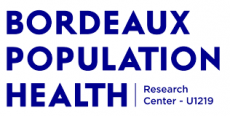Age-specific burden of cervical cancer associated with HIV: A global analysis with a focus on sub-Saharan Africa
Résumé
HIV substantially worsens human papillomavirus (HPV) carcinogenicity and contributes to an important population excess of cervical cancer, particularly in sub-Saharan Africa (SSA). We estimated HIV- and age-stratified cervical cancer burden at a country, regional, and global level in 2020. Proportions of cervical cancer a) diagnosed in women living with HIV (WLHIV), and b) attributable to HIV, were calculated using age-specific estimates of HIV prevalence (UNAIDS) and relative risk. These proportions were validated against empirical data and applied to age-specific cervical cancer incidence (GLOBOCAN 2020). HIV was most important in SSA, where 24.9% of cervical cancers were diagnosed in WLHIV, and 20.4% were attributable to HIV (vs 1.3% and 1.1%, respectively, in the rest of the world). In all world regions, contribution of HIV to cervical cancer was far higher in younger women (as seen also in empirical series). For example, in Southern Africa, where more than half of cervical cancers were diagnosed in WLHIV, the HIV-attributable fraction decreased from 86% in women ≤34 years to only 12% in women ≥55 years. The absolute burden of HIV-attributable cervical cancer (approximately 28 000 cases globally) also shifted towards younger women: in Southern Africa, 63% of 5341 HIV-attributable cervical cancer occurred in women <45 years old, compared to only 17% of 6901 non-HIV-attributable cervical cancer. Improved quantification of cervical cancer burden by age and HIV status can inform cervical cancer prevention efforts in SSA, including prediction of the impact of WLHIV-targeted vs general population approaches to cervical screening, and impact of HIV prevention.
Origine : Fichiers éditeurs autorisés sur une archive ouverte



